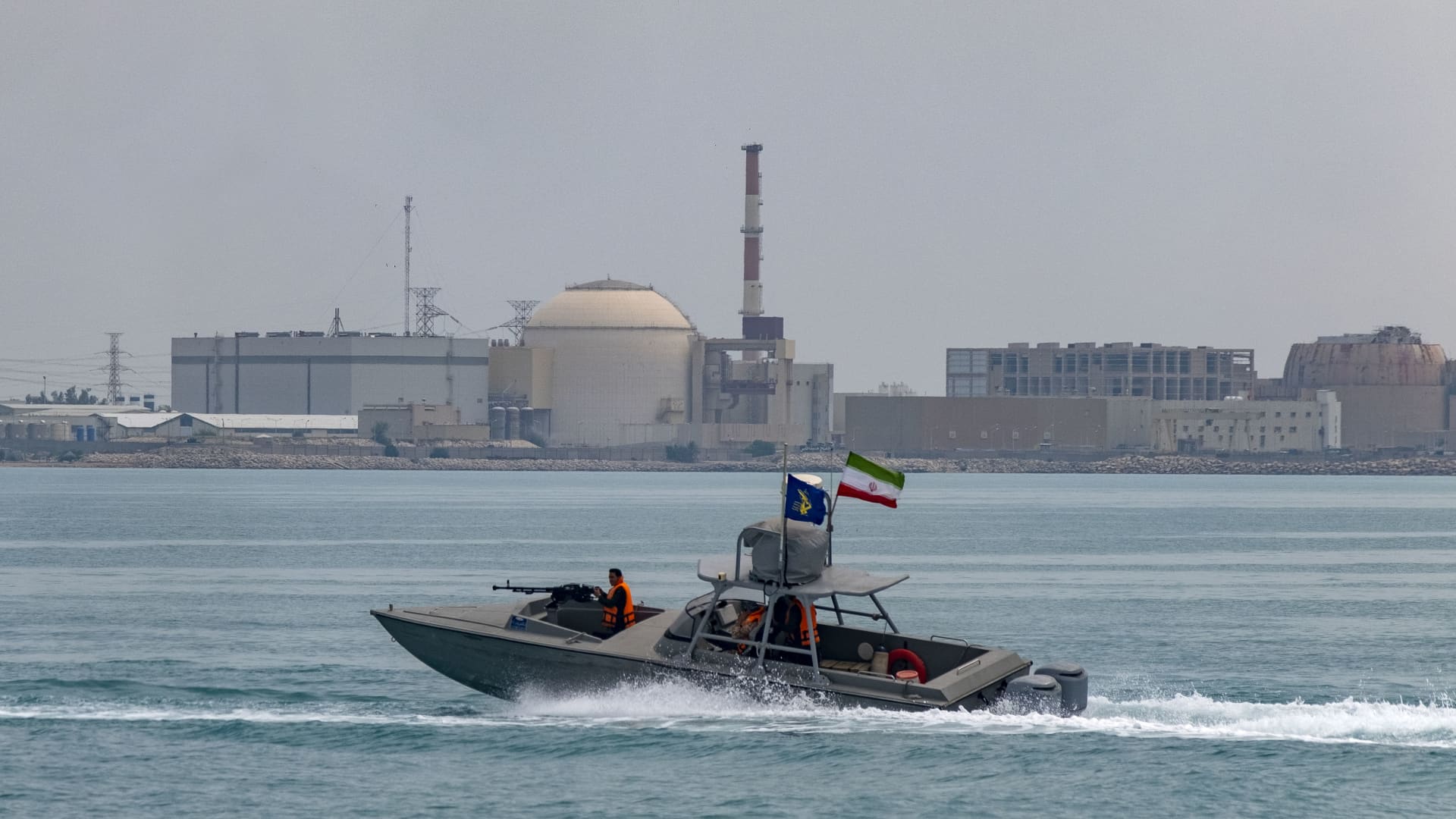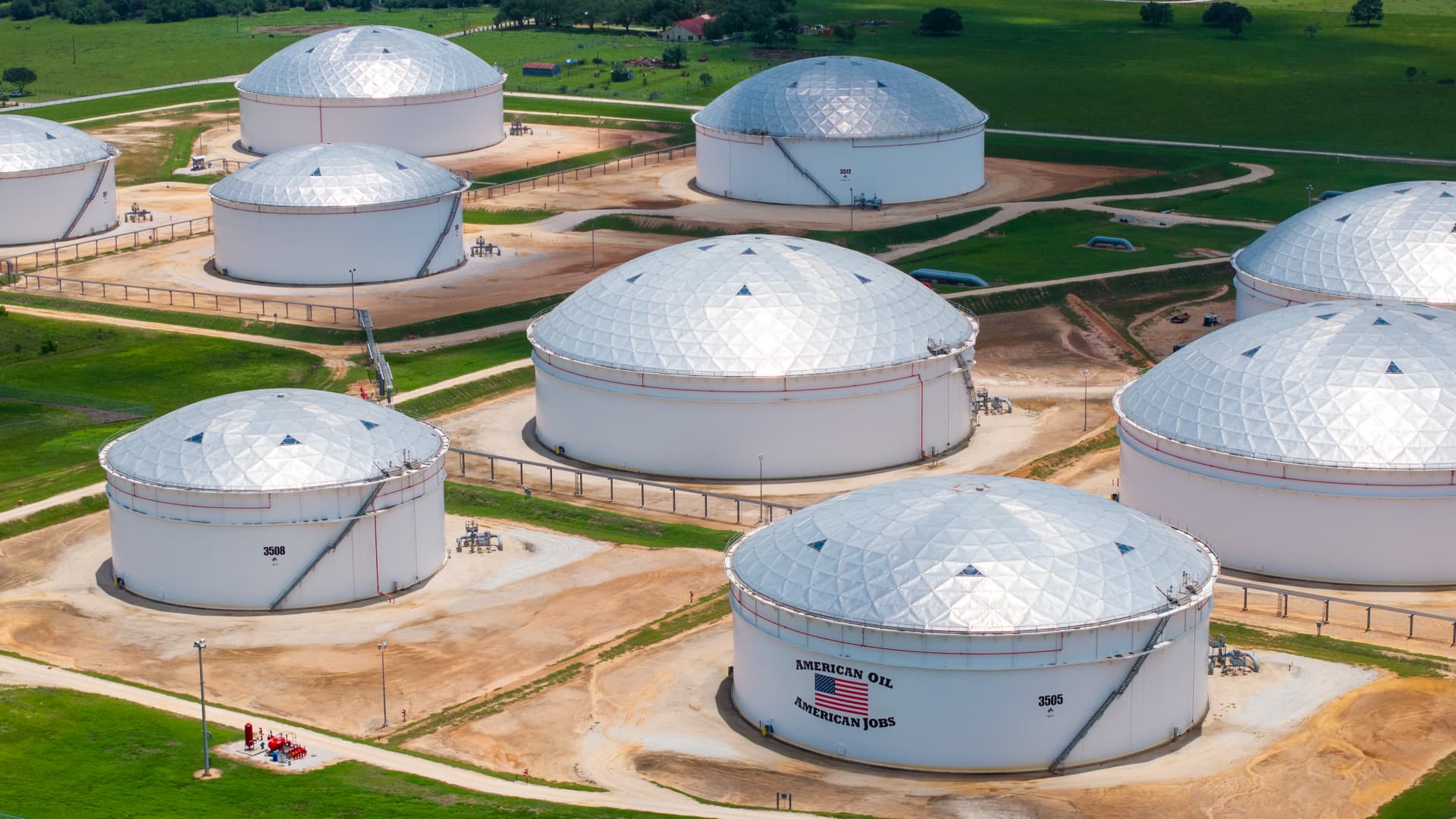Nurphoto | Nurphoto | Getty Images
Jakob Larsen, head of security at Bimco, which represents global shipowners, said all shipowners were closely monitoring developments in the region and some have already paused transits in the Strait of Hormuz due to the deterioration of the security situation.
His comments come shortly after the U.S. on Saturday attacked three major Iranian nuclear enrichment facilities, a massive escalation in its involvement with Israel’s effort to cripple Tehran’s nuclear program.
Iran has condemned the attack, saying it reserves all options to defend its sovereignty and people.
“Before the US attack, the impact on shipping patterns was limited,” Bimco’s Larsen said.
“Now, after the US attack, we have indications that the number of ships passing is reducing. If we begin to see Iranian attacks on shipping, it will most likely further reduce the number of ships transiting through the [Strait of Hormuz],” he added.
The Strait of Hormuz, which connects the Persian Gulf to the Arabian Sea, is recognized as one of the world’s most important oil chokepoints.
In 2024 and the first quarter of 2025, for instance, flows through the narrow waterway made up roughly 20% of global oil and petroleum product consumption, according to the U.S. Energy Information Administration. Around 20% of global liquified natural gas (LNG) also transited through the Strait of Hormuz last year, primarily from Qatar.
The inability of oil to traverse through the waterway, even temporarily, can ratchet up global energy prices, raise shipping costs and create significant supply delays.
Yet, in the aftermath of the U.S. attacks on key nuclear sites, Iran’s parliament reportedly approved the closure of the waterway, risking alienating its neighbors and trade partners.
Standby mode
Andy Critchlow, EMEA head of news at S&P Global Commodity Insights, said some anecdotal evidence suggested a slowdown in shipping navigation through the Strait of Hormuz following the U.S. strikes on Fordo, Natanz and Isfahan.
“The pace at which tankers are entering the Strait of Hormuz has definitely slowed. We have indications from shippers that they are putting tankers and vessels on standby, so they are waiting for an opportune moment to enter the Strait,” Critchlow told CNBC’s “Europe Early Edition” on Monday.
“At the same time, there have been reports that suppliers of LNG, for example, in the Gulf have told lifters of LNG to wait before entering, so [as] not to loiter in the Gulf, keep vessels out of that region,” he added.

Japan’s Nippon Yusen, one of the world’s largest ship operators, recently introduced a standby to enter the Strait of Hormuz to limit the length of its stay in the Persian Gulf, according to S&P Global Commodity Insights, citing a company spokesperson.
Nippon Yusen’s policy, which comes as part of a precautionary measure following the escalation of Isreal-Iran tensions since June 13, means ships are asked to pause for a day or a couple of days when there is flexibility in the shipping schedule, S&P Global Commodity Insights reported on Monday.
The company has not implemented a navigation halt in the Strait of Hormuz, however.
Japan’s Mitsui O.S.K Lines also instructed vessels to limit time spent in the Gulf following U.S. strikes on Iranian nuclear facilities, Reuters reported Monday, citing a company spokesperson.
Spokespeople at Nippon Yusen and Mitsui OSK Lines were not immediately available to comment when contacted by CNBC.
Satellite image of the Strait of Hormuz, a strategic maritime choke point with Iran situated at the top with Qeshm Island and the United Arab Emirates to the South. Imaged 24 May 2017.
Gallo Images | Getty Images
German container shipping firm Hapag-Lloyd said it is continuing to sail through the Strait of Hormuz.
“However, the situation is unpredictable and could change within a matter of hours. In this case, our emergency and response plans, which we maintain as part of our crisis management system, come into effect,” a Hapag-Lloyd spokesperson said.
Insurance costs to spike
Peter Sand, chief analyst at pricing platform Xeneta, said container shipping activity in the Persian Gulf and upper Indian Ocean appears to be continuing as expected for now.
“All companies access the risk individually – but the current situation requires them all to do so several times a day. Staying in close dialogue with national intelligence agencies and their own captains onboard the ships,” Sand told CNBC by email.
Insurance costs, meanwhile, have “probably” been hiked again, Sand said, noting Iran’s parliament reportedly approved the closure of the Strait of Hormuz.
Any final decision to close the waterway rests with the country’s national security council, and its possibility has raised the specter of higher energy prices and aggravated geopolitical tensions, with Washington calling upon Beijing to prevent the strait’s closure.















Leave a Reply